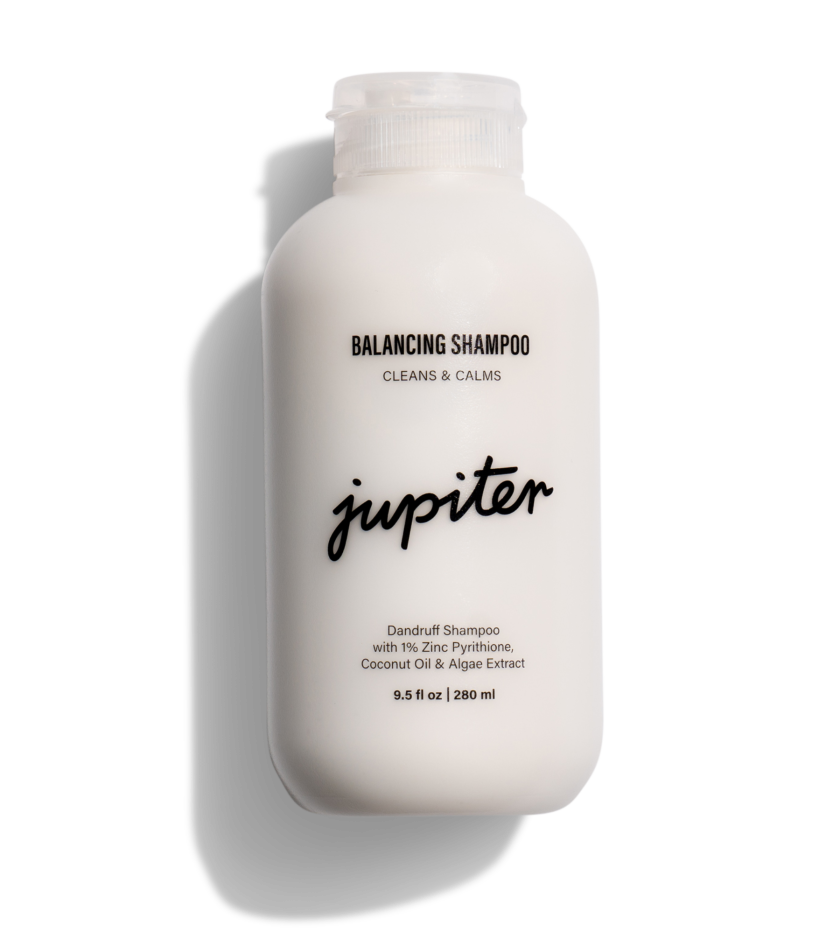#MakeMillionsMoreConfident with Strong Girls United
#MakeMillionsMoreConfident with Strong Girls United
From our diets to household cleaners to cosmetics, many people are trying to live “cleaner” lifestyles these days. We’re paying more attention to ingredients on labels from retailers in a quest to avoid harmful chemicals to improve our hair wellness. We’re opting for more natural, sustainable, nontoxic products that are better for our health, our families’ health, and the health of the planet.
Enter the clean beauty movement. Clean beauty products usually exclude sulfates, parabens, phthalates, synthetic fragrances, and dyes, while highlighting natural, plant-based ingredients that are more familiar and eco-friendly: coconut oil, aloe vera, lavender, lemon juice, shea butter, rosemary, mineral oil, and more.
But clean beauty, like every consumer trend, offers up plenty of misunderstandings and misinformation. Here are 7 clean beauty myths you’ve probably heard - and the lowdown you need to be a smart, safe consumer when searching for beauty and skin care products.
Myth #1: If a Product Is On Store Shelves, It Must Be Safe
This is an assumption made by many people who dismiss the clean beauty trend. They argue that if sulfates, parabens, and other ingredients were really so dangerous, they wouldn’t be allowed in so many widely available and popular products or approved by the FDA. After all, the majority of mainstream shampoos and conditioners, soaps, and even toothpastes contain these ingredients as foaming agents (in the case of sulfates) and preservatives (parabens).
It turns out, shockingly enough, that the US doesn’t do much to regulate the ingredients used by the beauty industry. Companies don’t have to prove their products are safe before selling them. Instead, the vast majority of ingredients are allowed until they’re proven unsafe. This means your lotion, mascara, sunscreen, or deodorant could be harmful to you without you even knowing, and could include potential carcinogens like formaldehyde, and chemicals like triclosan.
Other countries take a more cautious approach. The European Union bans or limits the use of 1,300+ ingredients in cosmetic and personal care products such as eye shadow, bronzer, highlighters, and concealer. It requires manufacturers to prove their products are safe before they hit the market. Canada bans or restricts over 500 ingredients in cosmetics. The US restricts only 11, and leaves it up to manufacturers to ensure the safety of their products. This leaves the consumer with the responsibility of figuring out what’s safe and what’s not and checking ingredient lists before buying at their local drugstore or Sephora.
Parabens have been banned in cosmetic products in the European Union since they’ve been shown to act as endocrine disruptors, meaning they mimic hormones, potentially causing reproductive harm. Sodium lauryl sulfate and sodium laureth sulfate are also banned in Europe because they are harsh and can irritate the skin and mouth - especially when they’re found in multiple products people use every day. In the US, both these ingredients are still widely used.
Myth #2: “Clean Beauty” Products Are Always Natural, Organic, and Sustainable
There is no 100% consistent definition of what qualifies a product as “clean.” Brands with clean products generally have their own definitions and their own lists of ingredients that are off-limits.
There is enough consensus around certain ingredients that most clean beauty brands avoid them - like parabens and phthalates - but there is no legally binding definition of what this term means. “Clean” is not legal language, and just because something’s marketed as clean doesn’t mean it’s safe.
Some cosmetic and skincare brands include organic, non-GMO, cruelty free, vegan, and sustainability standards under their “clean beauty” standard; others don’t. And products vary significantly in how far they go to eliminate harmful or questionable ingredients and ensure safety. Some might tout that they’ve banished a couple better-known toxic chemicals only to replace them with something less common but similarly unsafe for your health.
If you want to make sure the products you use meet your standards, the best way to do that is to learn about ingredients, check company websites, and read product labels carefully.
Myth #3: A Cleanser Needs to be Super Sudsy to Do Its Job
Most of us have come to associate cleansers with a rich, foamy lather - whether that’s our toothpaste, face wash, dish soap, or shampoo. Sulfates - like sodium lauryl sulfate and sodium laureth sulfate - are often responsible for this effect.
These sulfates are cheap ingredients and help clean effectively, as well as produce the suds consumers have come to associate with cleansing. But they are also harsh and can strip hair and skin of natural oils, leaving you with dry skin and brittle, frizzy hair. When it comes to hair care, conditioners can make up for some of this loss of moisture, but it’s generally better not to strip your hair and scalp of too much of their natural oils in the first place.
For people with sensitive skin and conditions like eczema, psoriasis, and dandruff, the results of using sulfates can be more severe: increased skin irritation and flaking.
The good news is, you don’t need a lot of sudsing or any sulfate ingredients to get clean skin, scalp, hair, or dishes. Seek out sulfate-free cleaning products instead. Some are a bit less foamy than you might be used to, but this doesn’t mean they’re not working - a lot of the sudsiness of cleansers is for psychological effect rather than cleansing power. With sulfate-free formulations, you’ll enjoy a gentler but equally effective cleansing experience, without the harmful side effects.
These kinds of ingredients may do more harm than good, with some posing a cumulative health risk over time and others aggravating sensitive skin or triggering allergic reactions.
Myth #4: “Clean” Products Are Less Effective
Whether a product is marketed as “clean,” natural, organic, etc., doesn't say anything about its effectiveness one way or another — many clean cosmetics still have amazing pigment, and clean moisturizers are known to effectively deliver the moisture your skin needs. It all depends on your needs and the formulation. Some “clean” products work well and others don’t; some just might not work well for you.
You don’t need harsh ingredients like sulfates in order to get clean. These kinds of ingredients may do more harm than good, with some posing a cumulative health risk over time and others aggravating sensitive skin or triggering allergic reactions.
In general, it’s best to look for the gentlest product that will meet your specific personal care needs. For example, if your hair and scalp are already healthy, a shampoo touting 100% plant-based organic ingredients might be just the mild cleanser you need for better nourishing and moisturizing of your scalp. On the other hand, if you’re struggling with dandruff, you’ll want to find a clean dandruff shampoo you can trust, with the active ingredients needed to effectively treat your scalp while moisturizing.
Myth #5: Natural = Safe
When we read product labels - whether it’s food or cosmetics - it’s easy to feel comforted by familiar-sounding ingredients.
But don’t assume that just because an ingredient is natural and recognizable it is safe. For example, some cleaning products now highlight that the sodium lauryl sulfate in their products is derived from coconut oil or palm oil, rather than created synthetically. Either way, the ingredient can still be harsh on your skin and hair.
Another example is essential oils. In a lab-tested professional formula, essential oils are generally used in safe amounts and mixed with other ingredients to moderate their potency. But essential oils can be irritating or even toxic when used at full-strength directly on the skin.
Essential oils are concentrated plant extracts that are used in many household and beauty products for a variety of properties, including a soothing or invigorating fragrance, antimicrobial action, anti-inflammatory effects, and more. Essential oils are often recommended as ingredients in DIY cosmetic formulations - a risky, and potentially even dangerous, proposition. This is especially true if you have a skin condition like seborrheic dermatitis, eczema, or dandruff that makes your skin more prone to damage and irritation to begin with.
Don’t underestimate Mother Nature - natural ingredients can be powerful, for better and for worse. It’s best not to experiment with home remedies, but instead look to balanced, tested formulations that harness the benefits of natural ingredients in the safest way.
Myth #6: Shampooing Less is Better For Your Scalp & Hair
If you use a harsh conventional shampoo that strips away your hair and scalp��’s natural moisture, shampooing less may actually help you.
But rather than using a product that causes damage - and just vowing to use it less - isn’t it better to find one that cleans gently, without over-drying or irritating your hair and skin in the first place?
If you’re dealing with dandruff, skipping shampoo is definitely not the best approach. Avoid harsh cleansers like sulfates - these can worsen scalp irritation. But you’ll also need to shampoo regularly with a dandruff-fighting formula containing Zinc Pyrithione to remove unhealthy scalp buildup and eliminate flakes and itching.
Myth #7: Skin Problems Mean You Have an Unhealthy Lifestyle
Some people believe that you can avoid skin problems if you can just follow a certain lifestyle perfectly. With an organic, plant-based, gluten-free diet, the right exercise routine, and the latest clean beauty regimen, you can supposedly be naturally free of issues like acne, psoriasis, and dandruff all without ever having to see a dermatologist.
While it’s true that a healthy diet, regular exercise, and avoiding harmful chemical exposure is generally a good idea for everyone, it is simply not true that even the most “perfect” lifestyle is guaranteed to clear up your skin or get rid of your dandruff.
Genes, hormone fluctuations, air quality, stress, climate, and many other factors all play into someone’s risk level for dandruff. Some of these variables are within our control, some of them aren’t - and it’s impossible to know which factors matter most for any one person.
So in addition to adopting healthy lifestyle practices, don’t hesitate to seek out a safe, effective scalp care treatment when you need it.
Clean Hair Care, Proven by Science
If you’re experiencing dandruff, you need hair and scalp care based on safe ingredients that really work - alongside scientifically-proven dandruff-fighting agents like Zinc Pyrithione.
Jupiter products never contain parabens, sulfates, phthalates, dyes, or artificial fragrances. And they’re packed with nourishing hair and skin care ingredients like coconut oil, spearmint, and rosemary. We believe you deserve effective dandruff and scalp care, minus the harmful ingredients found in most conventional brands - and a beautiful experience that makes every shower luxurious. Learn more about us.

Meet our head honcho. This soothing multi-tasker gets to the root of flaking and irritation, thanks to our star active ingredient, Zinc Pyrithione. Backed by a lush aroma of mint, vanilla, rosemary, sage, tangerine, and lavender, it’s bound to elevate your mood, and your shower.

































